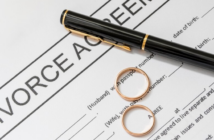Club drugs have been a persistent problem for society for many years, causing harm to those who use them and posing a threat to public safety. In 2023, these dangerous substances are still a significant concern, with people of all ages continuing to use them for their intoxicating effects.
These drugs have been associated with various harmful effects, including addiction, physical harm, and even death. Over 400 people in England and Wales died after taking club drugs in 2013. Here, we will delve into the topic of dangerous club drugs that continue to pose a threat in 2023. We will also provide valuable information to help you stay informed and make safer choices.
What are club drugs?
Club drugs are a group of recreational drugs commonly used in nightclubs, bars, parties, and other similar social settings. They are called “club drugs” because they are often used by young people in these settings to enhance their social experiences.
These drugs are known for their ability to produce feelings of euphoria, increased energy, and altered perceptions of reality. When mixed with alcohol, they are even worse. Some examples of club drugs include;
- MDMA (Ecstasy)
- Methamphetamine (Crystal Meth)
- Gamma-Hydroxybutyric Acid (GHB)
- Lysergic Acid Diethylamide (LSD)
- Ketamine
- Rophynol
Prevalence of club drugs in the UK
The prevalence of club drugs in the UK is difficult to quantify. Still, they continue to be a significant concern for law enforcement and health organisations. According to data from 2021, ecstasy (MDMA), ketamine, and cocaine are the most commonly used drugs in the UK.
The majority of these club drugs are used by underaged children. For instance, MDMA use by children and young adults increased over the years. There was a 4.5% Prevalence among 16 to 19-year-olds in England and Wales from 2018 to 2019, the highest from 2001 to 2002. Consequently, the number of MDMA-related deaths registered in the UK in 2018 was the highest on record.
Another club drug with a high prevalence is ketamine. Its use among adults in England and Wales is currently 0.8%—the highest on record. People aged 16 to 24 are almost four times as likely to use ketamine as all adults. Most club drugs are usually found in clubs and other social settings.
What makes them dangerous? The effects of club drugs
Club drugs are known for their ability to induce euphoria, increased energy, and altered perceptions of reality, making them popular among young people seeking to enhance their social experiences. However, these drugs are hazardous and can have serious short- and long-term consequences.
Some significant cases have come to the limelight concerning this. One major case of club drug addiction happened in 2012. A 15-year-old girl, Isobel Jones-Reilly, found pills in her lecturer’s drugs stash during an unsupervised university house party. Her death was caused by 9.96mg per kg of ecstasy in her body. In addition– in December 2022, a 16-year-old teenager was said to have overdosed on ecstasy–leading to her premature death.
Some effects of club drugs include;
- Euphoria and increased energy – Many club drugs, such as MDMA (Ecstasy) and Methamphetamine (Crystal Meth), cause intense happiness and increased physical energy.
- Hallucinations and altered perceptions – Drugs such as LSD (Lysergic Acid Diethylamide) and Ketamine can cause intense and vivid hallucinations and changes in perception and thinking.
- Impaired judgment – Club drugs can impair a person’s ability to make good decisions. This can lead to dangerous behaviour, such as unprotected sex, driving under the influence, or other hazardous activities.
- Addiction – Some club drugs, such as methamphetamine, are highly addictive and can lead to long-term physical and psychological harm.
Club drugs can also cause physical harm and long-term effects. For instance, ecstasy (MDMA) can cause dehydration, hyperthermia, and increased heart rate, leading to seizures, kidney and liver failure, and even death. Rophynol is a type of benzodiazepine often used recreationally. It has many adverse effects, including memory impairment, drowsiness, and impaired motor skills. Additionally, it has been used as a date rape drug because it can cause unconsciousness and amnesia when taken in large doses.
Many of these drugs are illegal, which makes it harder for authorities to monitor their distribution and use. Despite efforts from law enforcement and health organisations, club drugs continue to be a significant concern in the UK. Young people are advised to avoid these substances and seek professional help if they have drug abuse problems.
Drugs addiction treatments
If someone is experiencing an adverse reaction to a club drug, it is essential to seek immediate medical attention. Symptoms that may indicate a need for urgent treatment include:
- Loss of consciousness or inability to awaken
- Seizures or convulsions
- Breathing difficulties
- Rapid or irregular heartbeat
- Extreme confusion or agitation
- High body temperature (fever)
- Hallucinations or delusions
- Nausea or vomiting
Treatment for drug addiction typically involves a combination of behavioural therapy and medication. The specific approach will depend on the type of drug and the severity of the habit but may include the following:
- Behavioural Therapy: This can include individual or group counselling, where the person will learn coping skills and how to resist peer pressure and triggers that may lead to drug use.
- Medication: Sometimes, medication may be used to manage withdrawal symptoms or reduce cravings. For example, methadone can treat heroin addiction, and naltrexone can treat addiction to opioids and alcohol.
- Detoxification: This is the first step in the treatment process and involves removing the drug from the body. This can be done under medical supervision to ensure safety and comfort.
- Addiction Counselling: Find a confidential private addiction counselling service that can help you stay on top of your addiction through interactive workshops and ongoing sessions even after you’ve cleansed your body from the effects of abused substances.
How to prevent club drugs addiction
Preventing drug addiction starts with education and awareness about the risks and dangers of drug use. Some of the strategies that can be used to avoid drug addiction include:
- Education: Providing accurate and age-appropriate information about drugs and their effects can help young people make informed decisions about drug use.
- Building resilience: Encouraging healthy coping mechanisms, strong relationships with family and friends, and a sense of purpose and self-worth can help individuals better withstand peer pressure and reduce their risk of drug use.
- Promoting healthy activities: Encouraging individuals to participate in sports, arts, and other activities they enjoy can provide positive outlets for stress and reduce the risk of drug use.
- Addressing mental health issues: Treating mental health conditions, such as anxiety or depression, can help reduce the risk of drug use, as individuals may use drugs to self-medicate their symptoms.
- Drug-free workplace policies: Employers can establish and provide education and resources to help employees avoid drug use.
- Strengthening community-wide prevention efforts: Communities can work together to create drug-free environments through community coalitions, public awareness campaigns, and local drug-free workplace programs.




